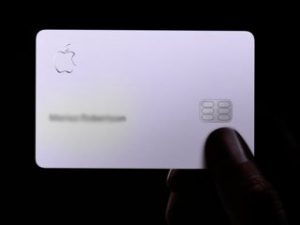Among the most tangible announcements at Apple’s services event, was also its most interesting: a credit card, aptly called the Apple Card, with both a physical and digital version that gives you cash back. Apple News and it’s streaming video services were the talks of the town before the event. But now people have also begun to discuss its financial services – Apple Card. Apple has decided that it needs a traditional product, even one with the unconvinced moral baggage of a credit card, to promote its Apple Pay While the digital wallet and payment platform is growing fast, it’s still used by less than half of all global iPhone owners (and even less in the US). “I think the strange optic here is that credit cards are not necessarily innovation in payments, even with better rates and loyalty,” says Rivka Gewirtz Little, a global research director at analyst firm IDC specializing in payments. “So, to see a big tech firm, which hangs its hat on innovation, go such a traditional route – that’s what I think is a bit odd here. I’d like to see Apple get more innovative in transforming the way we pay.” Like every other Apple product and service, Apple have managed the same with its Apple Card as simple, secure, and transparent. Making your transactions is smooth from your iPhone. Or you can use Apple’s titanium card in the world. Apple Card is in the Wallet app on your iPhone. The physical card has really changed its appearance. Unlike other popular plastic cards, Apple’s doesn’t show your card number, CVV, expiry date and all.

With the Apple Card, the company is going one step further and trying to capture not just what you consume, but also the financial means you use to do so. These features of Apple Card are where you spent your money and how much you spend on a category. At the end of a month, you can see the map to know where you paid your cash; tap to pinpoint on the map. Further, your xpenses are categorized color- coded; Entertainment, Food, Shopping, etc.






















